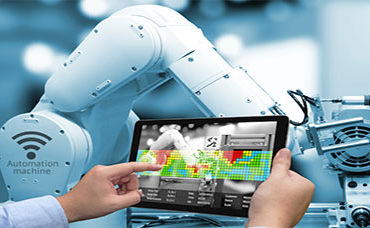NSF Explores Risks, Rewards of Automation

(Zapp2Photo/Shutterstock)
Addressing the growing unease over the prospect of AI taking jobs from humans, the National Science Foundation is soliciting proposals for how machines and workers can collaborate in ways that allow technology to augment the human workforce and ultimately boost productivity.
The NSF program, “Future of Work at the Human-Technology Frontier,” is part of broader agency effort launched in 2016 to identify future investments in science and technology. The jobs effort seeks to address the promise and pitfalls of AI and robotics, including possible job losses associated with automation, algorithmic bias as well as “over-dependence on technology and the erosion of human skills.”
Along with augmenting human job performance, the research program focuses on three other areas: building the “human-technology partnership;” exploring the societal impact of automation technology; and “fostering lifelong learning.”
“We are on the cusp of a major transformation in the workplace,” said Fay Cook, NSF’s assistant director for social, behavioral and economic sciences. “The workplace of tomorrow is going to feature symbiotic co-existence—a collaboration among humans and machines in cyberspace.”
While the research effort is “anchored in work” and seeks to prepare the U.S. workforce for coming automation, it also emphasizes the roles of emerging technologies like machine learning and cognitive computing.
Once the risks and benefits of automation are sorted out and understood, human-machine collaboration is ultimately seen as a key to making the U.S. economy more competitive. “We have a unique opportunity to actively shape that future, to use technology to improve the quality of work and ultimately to increase productivity and economic growth,” Cook added.
Still, NSF said this week it wants potential grantees to address growing concerns about the impact of automation on the workforce and how workers can be retrained to keep pace with rapidly advancing AI technology. Hence, researchers are being urged to come up with novel ways to “understand, anticipate, and explore mitigation of potential risks arising from future work at the human-technology frontier.”
NSF is currently soliciting bids for the Future of Work initiative due on March 6. The agency expects to invest $30 million in each of its ten “Big Idea” technology initiatives ranging from quantum computing to harnessing big data.
The agency announced funding last fall focused on the critical interface between human and robots on the assembly line. The $2.5 million manufacturing grant is shared by researchers at Indiana University, MIT and project leader Purdue University. The researchers said simulations span everything from an entire factory to a specific workflow. The simulation platform will use AI tools, augmented reality to help robots perceive objects as well as Internet of Things networks to link machines to robots and human operators.











